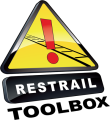1.4 BTP PIER plans
BTP (British Transport Police) is the key organisation undertaking GB nationwide work on railway suicide in addition to the Network Rail / Samaritans programme. PIER plans include four aspects: Prevention, Intelligence, Enforcement and Reassurance. Prevention Intelligence Enforcement Reassurance (PIER) Plans are action plans generated by BTP in order to identify vulnerable persons known to be a suicide risk to the rail system. They have also been called Suicide prevention plans and are agreements that are made with people about their behaviour in the vicinity of the railway and monitoring of people under these plans when they are in the vicinity of the railway.
- Try to monitor vulnerable people and obtain a personal profile of the person and a list follow up actions that may be needed. This can include contact with mental health teams, general practitioners, the local authority, family or the local police.
- Collaborative working with railway organisations is also an important part of this. Ideally, all relevant stakeholders need to be involved.
- Providing support to people is a major part of PIER plan process, helping people to understand that their actions have consequences. However, prosecution is also an option.
- Example from BTP : Force control rooms combined with unique suicide prevention hotline. To support the work of the National Suicide Prevention Steering Group, the BTP have introduced two new processes to help enhance the management and control of suicide related incidents:
- Their ’Force Control rooms’ will now ensure that BTP resources continue to attend incidents involving suicidal people on the railway even if local police officers get there first. In this way they can relieve the local officers of the tasks associated with dealing with the person concerned, and make sure their policies and procedures are complied with and links to NHS expertise exploited.
- BTP have also introduced a new emergency only telephone line, called the “Suicide Prevention Hotline 0300 123 9101”. This number will be given to railway staff and certain mental health and social care institutions to alert BTP to emergency situations where it is believed someone is about to attempt to take their own life. BTP controllers answering this line will be aware of the necessary actions and procedures they need to adopt and communicate in order to minimise the risks to life. BTP would prefer railway staff and relevant partners to call BTP directly on the new number rather than use 999. If rail staff call 999 from a ‘Railnet’ phone they will be asked whether they want to speak to BTP or local emergency services. However calls to 999 from any other phone will be routed to the local geographical police force. They in turn will generally inform BTP of the incident but do not do so in all cases; obviously we want to avoid this situation.
- Whilst this may seem to be counterproductive for those contemplating suicide, it can break a cycle of nuisance and disruptive behaviour and contribute to rehabilitation, if it is applied in the right cases.
- PIER plans include amending the missing persons procedure, such that they can now be notified of any missing person where there is some concern that they may use the railway network to attempt suicide; establishing a third party referral protocol with Samaritans, whereby they can facilitate a contact between a vulnerable person and Samaritans; and the production and management of PIER Plans for identified vulnerable people known to be a suicide risk to the rail system.
- Evidence from Great Britain suggests positive results through this measure (Brown et al., 2012; RSSB , 2013).
last update: 2014-08-24 Print

